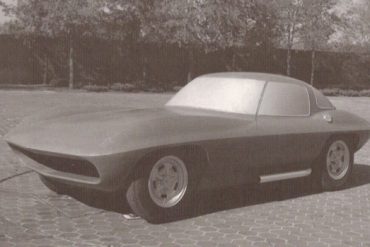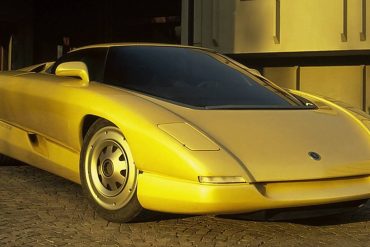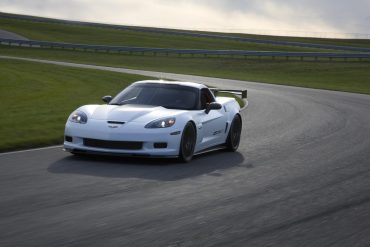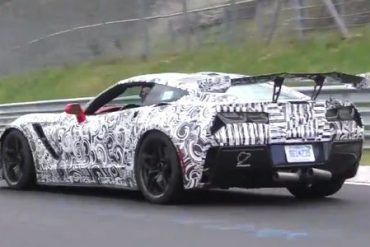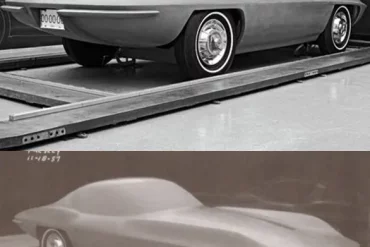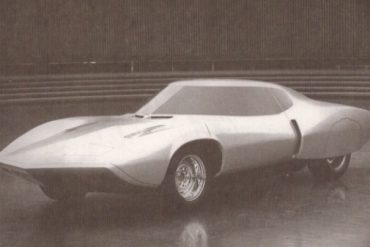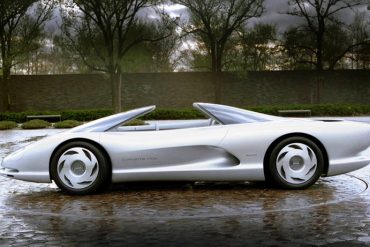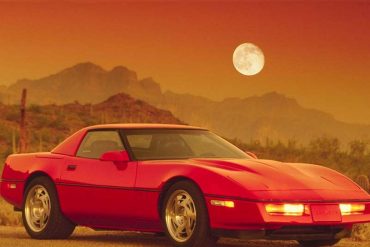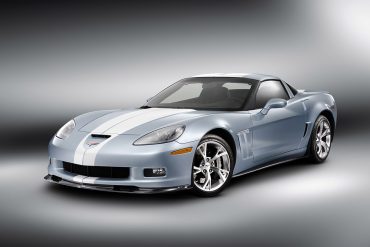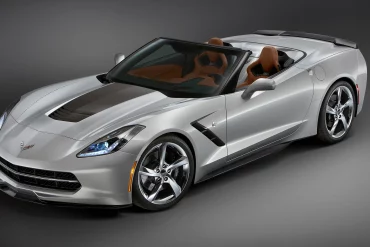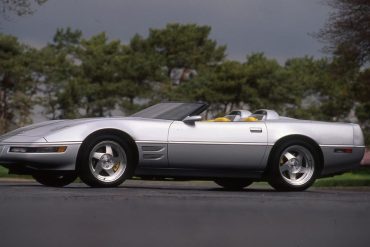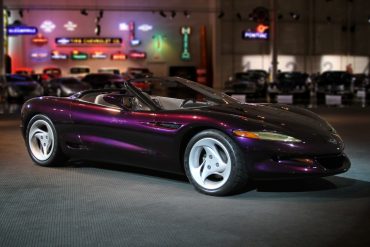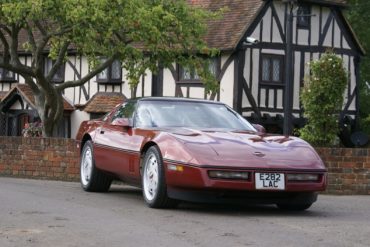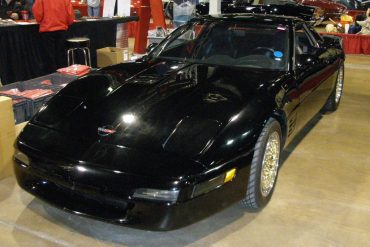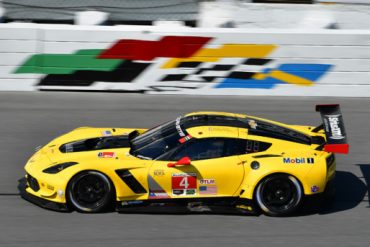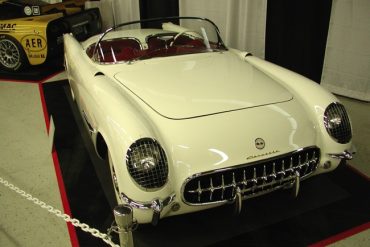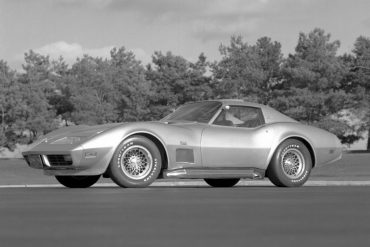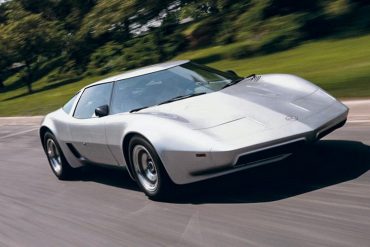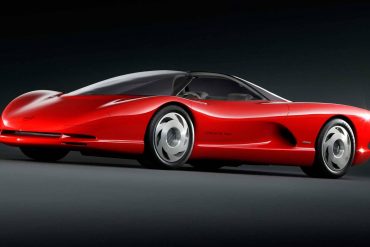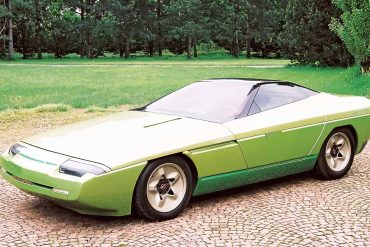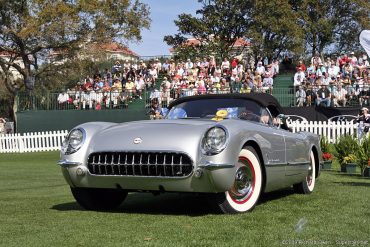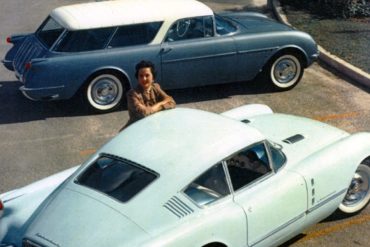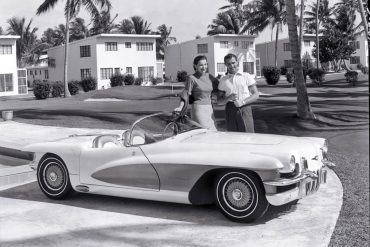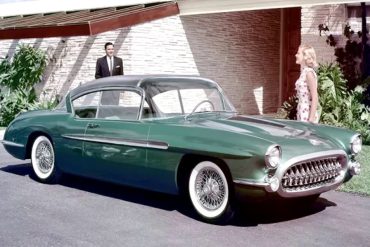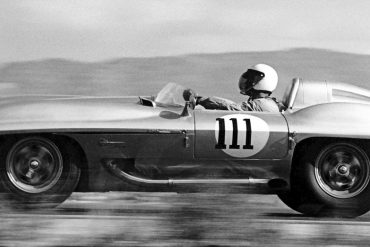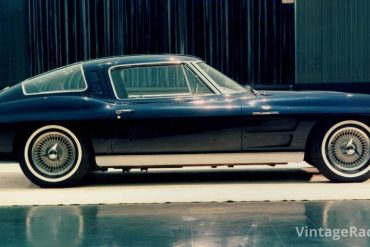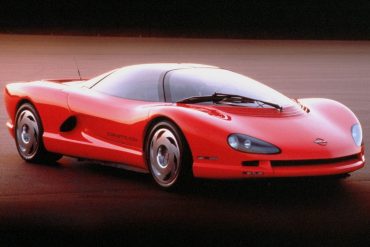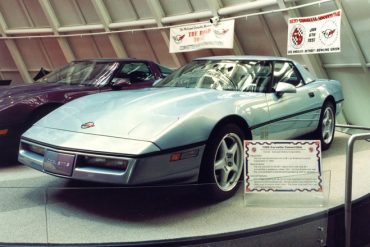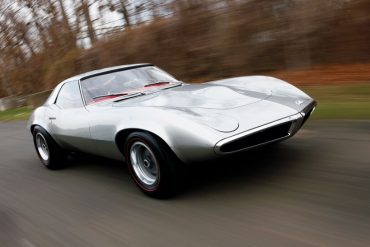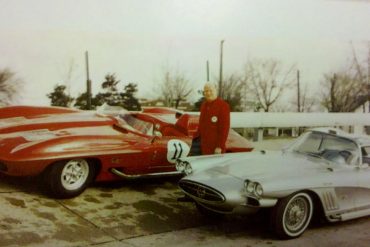Somewhere in the second part of 1959, project XP-720 begins at GM Styling, to design a production Corvette based on Bill Mitchell's Sting Ray racer. It would become known as the C2 or second generation Corvette. In October of that same year, a clay mock-up of project XP-720 is completed and put on display for General Motors' management viewing.
The Nivola may be considered Bertone’s homage to the most fascinating American sports car: the Chevrolet Corvette. The sophisticated mechanical unit of the ZR-1 was interpreted by Bertone in a European key. Bertone designed a special chassis to make a sporty "boat" with a mid engine. This mechanical layout made it possible to exploit all the power of the engine when accelerating and warrant perfect roadholding on bends.
The 2011 Chevrolet Corvette Z06X Track Car Concept was designed to suggest new components and a new idea for transforming a production Corvette into a serious and closed-course track car. This track car concept was developed and produced by Chevrolet in partnership with Pratt and Miller, the partners in Corvette Racing in the American LeMans Series. The competition-oriented modifications of the concept include a polycarbonate rear window, roll cage, safety harness, racing seat.
Spy Photos Reveal Clues About the Next ZR1 Corvette Since the introduction of the C7 Stingray in 2014, Corvette enthusiasts...
Duntov laid out three design concepts that took decades to implement. The first was his proposal for the 1957 Q-Corvette. This design called for the following: an all-aluminum, fuel-injected small-block engine, four-wheel independent suspension, four-wheel disc brakes, and a transaxle. This design concept arrived in 1997 as the C5.
To clothe the 1965 mid engine Corvette chassis, the designers at Styling Staff proposed a much more radical shape than Zora Arkus Duntov, the main force behind a mid engine Corvette, had in mind. It would have provided rear vision solely through a periscope. The design had bold air intakes at the rear and a split windscreen that lifted up with the gullwing doors.
The first of these cars was the 1985 Corvette Indy Concept vehicle. It was developed as a “pushmobile,” meaning that it was a non-functioning, full-size clay mockup that was developed to test market interest in the concept. The car featured the same mid-engine configuration that Zora Arkus-Duntov had always envisioned for the Corvette program.
How do you beat a slew of Fox-Body 5.0 Mustangs that seemingly dominated the roads in the late '80s? You take a 454 cu.-in. big-block engine and stuff into a C4 Corvette and call it "Big Doggie". An experimental vehicle used to determine how to convert from a small block to a big block. Its 454 big block V8 along with its orange paint make this high horsepower engineering study a one-of-a-kind standout in Corvette history. The car had as much HP as the '90 ZR-1 did and it was named "ZR-2" or "Big Doggie". Old dog, new tricks joke?
The Carlisle Blue Grand Sport Concept is painted in a very cool Carlisle Blue exterior with exquisite Pearl White full-length racing stripes. This color combination is highlighted with Silver-painted Torque 2 wheels. The Corvette also benefited from carbon fiber front splitter and rockers, a full-width rear spoiler, and a Grand Sport style hood blanket. For the interior, Chevrolet has opted for Ebony/Titanium leather with blue stitching, a new Bose Premium Audio with nine speakers.
Chevyt presented a trio of Corvette Stingray concepts. Many of the items fitted to the cars are available through the Chevrolet Accessories and Chevrolet Performance catalogs. Designed with cruising in mind, the Stingray Atlantic convertible concept features stunning Blade Silver paint, while the Stingray Pacific concept is more race-inspired and the Stingray Gran Tourismo was created to commemorate the 15th anniversary of the Gran Tourismo video game.
Chevrolet Corvette ZR-1 Spyder prototype, 1991, by ASC. An experimental styling prototype ordered by Don Runkle, Chevrolet’s chief engineer, to see how far the ZR-1 might be pushed in convertible form. The windshield was chopped in half and the seats were mounted directly to the floorpan. The black example in the National Corvette Museum was originally painted Sebring Silver with a Neutrino Yellow interior.
The Corvette Stingray Concept was developed as an internal design challenge to combine classic Corvette cues with surprisingly high-tech features, modern materials, and a striking new appearance. The car is well-appointed with a clamshell hood, scissor-style doors, ergonomic seats, rear-view camera with night vision enhancement, and a high performance hybrid drive. Interactive touch controls allow the driver to customize the power and efficiency of his or her ride.
This is no ordinary C4 coupe, but a GM Engineering test mule with VIN plate EX4607 proudly displayed in the windscreen, built in 1986 to test all the new-for-1988 features. This actual car must have spent weeks pounding round the General Motors Proving Ground at Milford, Michigan with longer runs on the road, testing all the changes for a year which saw the C4 suspension, steering and brakes vastly improved.
CERV IV was nothing more than a C4 with the all new powertrain and interior in it. Read the commentary of a car magazine reporter: "We suspect that the first, very early prototypes of the all-new, Gen III ran on the dynos at GM Powertrain sometime in the early spring of 1993. In-vehicle testing began at the GM Milford Proving Ground in the first week in May of 1993 with the "Chevrolet Engineering and Research Vehicle IV-A".
The IMSA WeatherTech SportsCar Championship Explained Each year in early January, Corvsport.com begin publishing stories about the Corvette Racing program. ...
Based on Harley Earl’s Project Opel plaster model, the EX52 / 122 was the original concept car that inspired the nation and left countless consumers wanting a Corvette to call their own. This Corvette concept was introduced at GM’s Motorama in January 1953.
Chevrolet Corvette Mulsanne Showcar, 1974. Created by Bill Mitchell, the Mulsanne was a development of several previous Corvette “specials”, the 1969 Aero and the 1970 Scirocco. By 1974 it had been bored out to 454 ci and fitted with an experimental Rochester fuel injection system, it also had a periscope rearview mirror system.
The Chevrolet Aerovette (originally designated Experimental Project XP-882) was developed in the late 1960's under the watchful eyes and mind of Zora Arkus-Duntov. Unlike the XP-819, which ultimately proved to have too much rear weight bias, Duntov focused on developing the Aerovette as a mid-engine platform.
Mid-Engine Prototypes: The 1985 Corvette Indy Concept, The 1986 Corvette Indy and the 1990 CERV III Since the introduction of...
In 1983, Bertone began to explore the possibility of approaching the US market with the Ramarro, an exercise in applied technology around mass-produced mechanics. The Ramarro, which means "green lizard" in Italian, was created on the chassis of the well-known Chevrolet Corvette, and the underlying concept aimed to modify the layout of the mechanical components.
The 1954 Corvette was outfitted with several unique design features. These were the results of two design exercises that included both interior and exterior upgrades. Outwardly, this styling concept is distinguished by its sharkfin headlights which effectively split each headlight down the center.
The Corvair concept car was initially presented to the public at the 1954 Motorama at the Waldorf Astoria hotel in Manhattan. The Corvair presented at the Waldorf was not the same car that traveled to other Motorama shows throughout the year.
The engineers came up with a unit-body construction that relied on strength coming from the side sills of the chassis. These contained the exhaust which probably easily overheated the cockpit, especially in the coupe. Unfortunately, GM fitted fake V6 engines in both cars with a concept valve train that included dual overhead camshafts.
On July of 1955, the Chevrolet design studio staff created a dream car for the 1956 GM Motorama shows, called Corvette Impala. The Corvette grille and grille surround are incorporated, as well as other Corvette components. This hardtop five-passenger sports sedan shows the name "Corvette Impala" on the front emblem and rear license plate.
In 1959, the bones of the SS were revived when Bill Mitchell secretly funded the Stingray race car. Mitchell purchased the chassis of the 1957 SS race car mule for $500 and had a design team create a new body. Mitchell felt the first generation Corvettes were too rounded and soft, so the Corvette Sting Ray Racer featured a sharper body edge that made it work.
The Stingray that never was. The stretched version of this new Corvette model for 1963 has rear seating and was built as ordered by Chevrolet chief Ed Cole. Larry Shinoda designed this coupe, that never went into production because the demand for the two seated Stingray already was overwelming. A running prototype of a 2+2-seat C2 Corvette intended to compete with the Ford Thunderbird was built, but the project was canceled.
The 1986 Corvette Indy Prototype was developed beyond clay modeling to the point of a fully-functioning, drivable car, though it was clearly understood that this car would never evolve beyond the prototype stage. Like the clay mock-up before it, development of the mid-engine Indy prototype began in 1985, pulling design cues from its predecessor.
There were several successful attempts to build a convertible ZR-1, most of them by private people. The DR-1 was a GM prototype to test the structural integrity of the ZR-1 chassis when it would be topless. The car was built by American Sunroof Corporation (ASC) for Don Runkle, who was the vice-president of Advanced Engineering Staff, which explains the “DR-1” designation. It was a standard convertible transformed to ZR-1 specs.
When first introduced to the world by Pontiac in 1964, the car showed so much promise that Chevrolet (allegedly) put a swift end to its development to prevent its production from hindering the sales of the Corvette. Afterall, with the introduction of the 1963 Split-Window Corvette, Chevy was finally seeing an increase in sales, something lacking for most of the first-gen.
Designed and built under the personal supervision of Bill Mitchell, the wild-looking XP-700 used many regular Corvette components (frame, chassis parts and engine). Bill Mitchell had a lot of “customs” built for himself. This XP-700 previewed the new tail of the upcoming 1961 Corvette.


